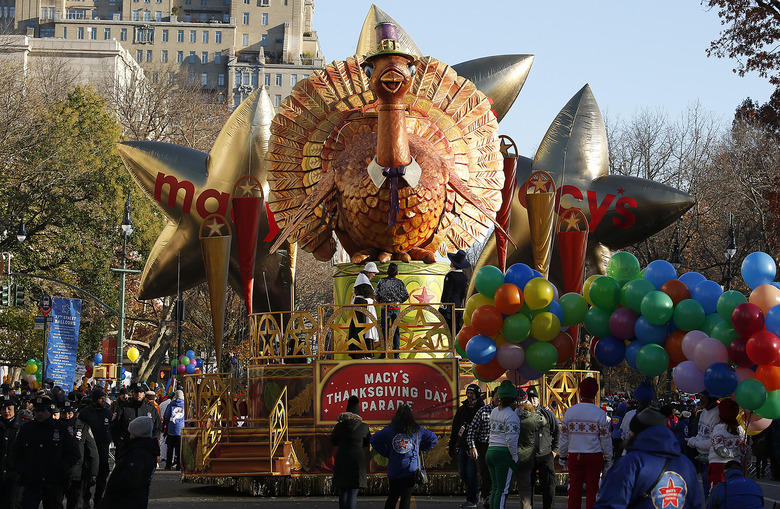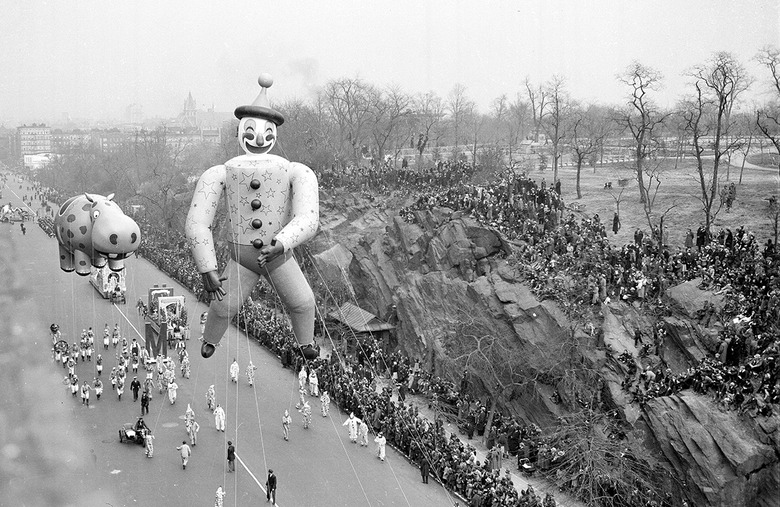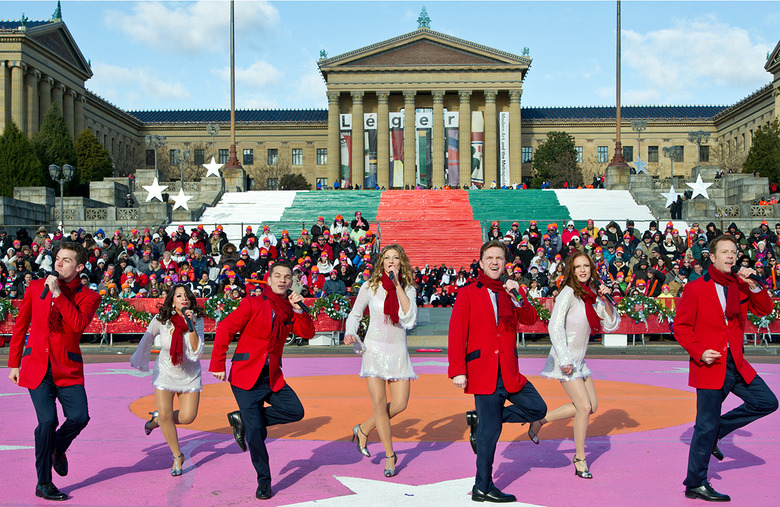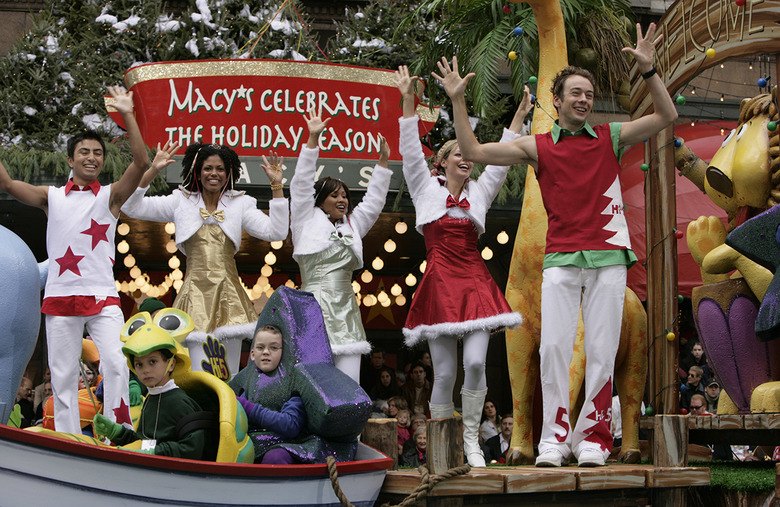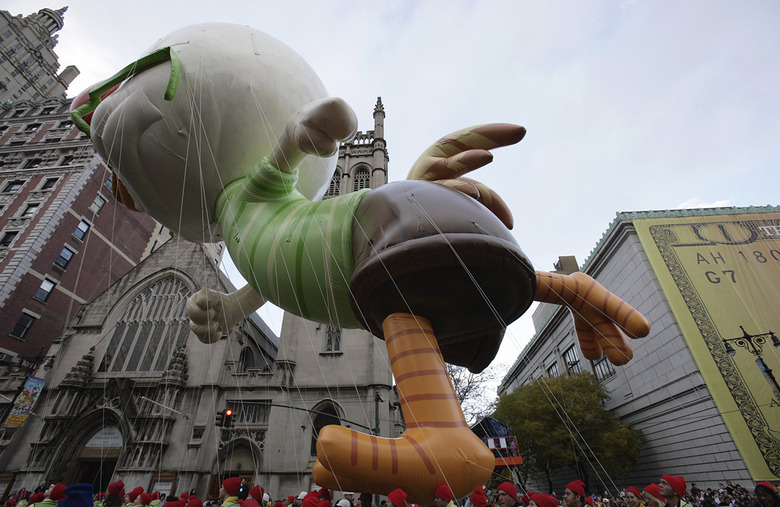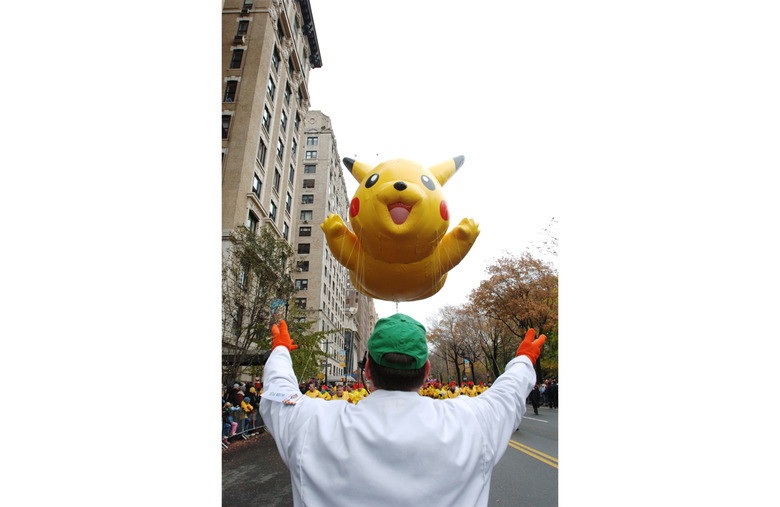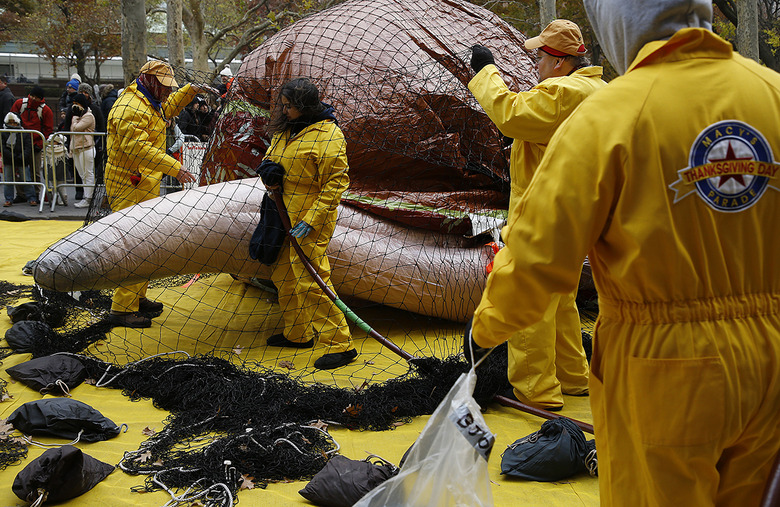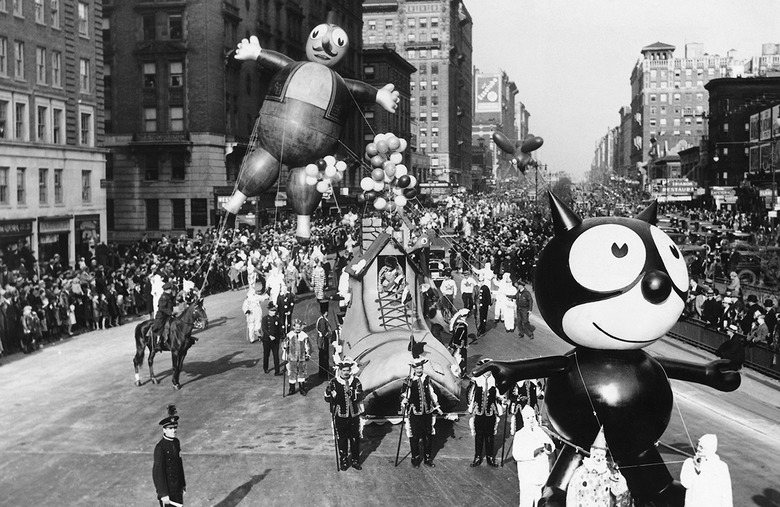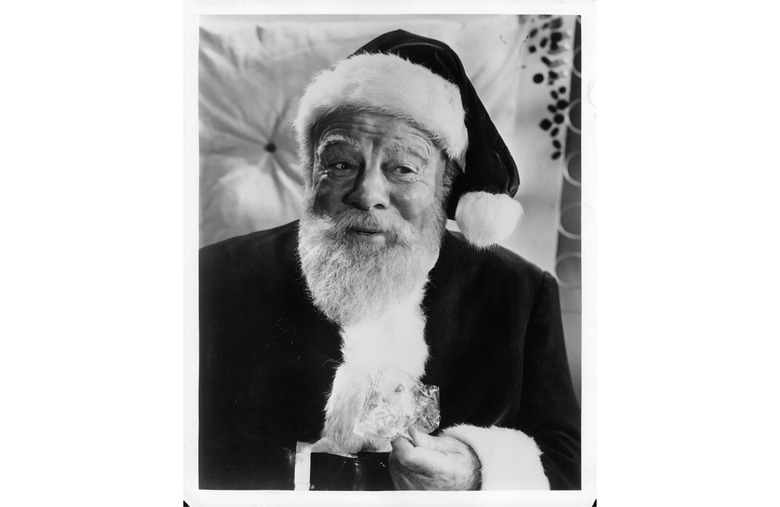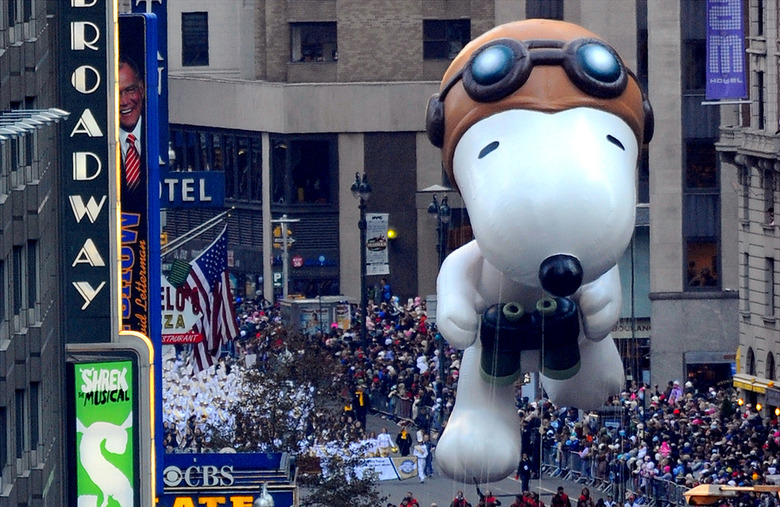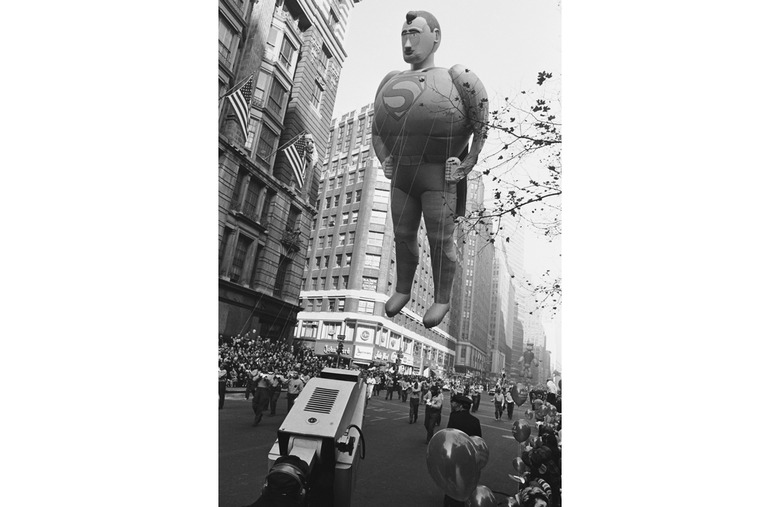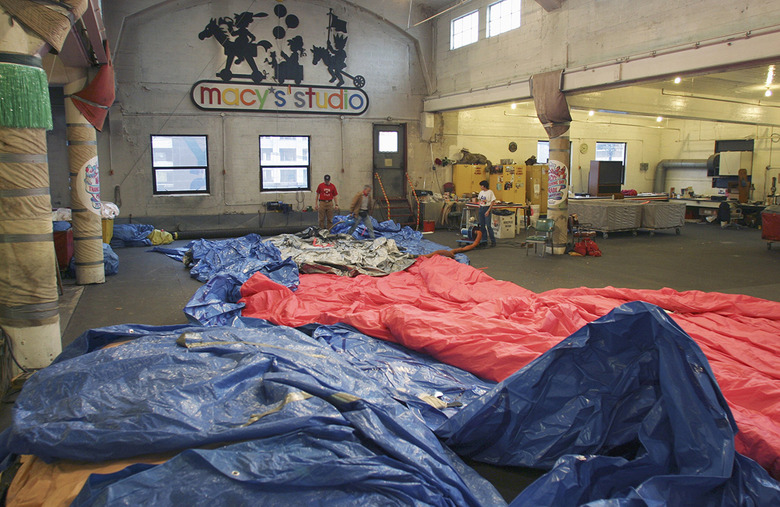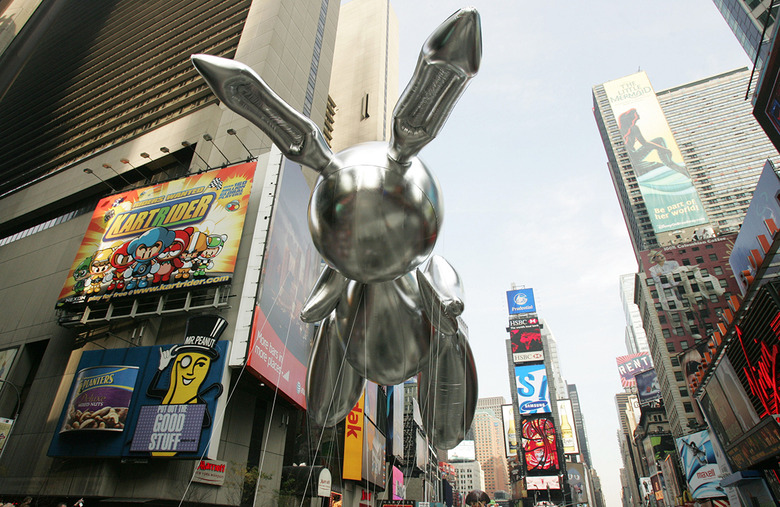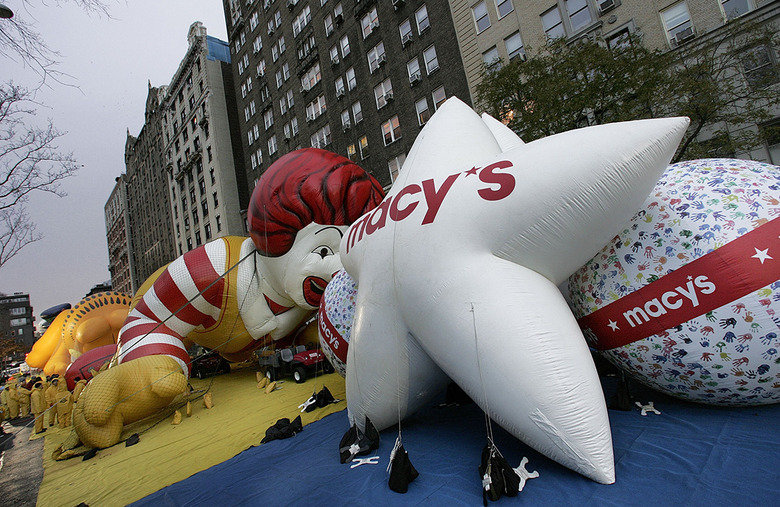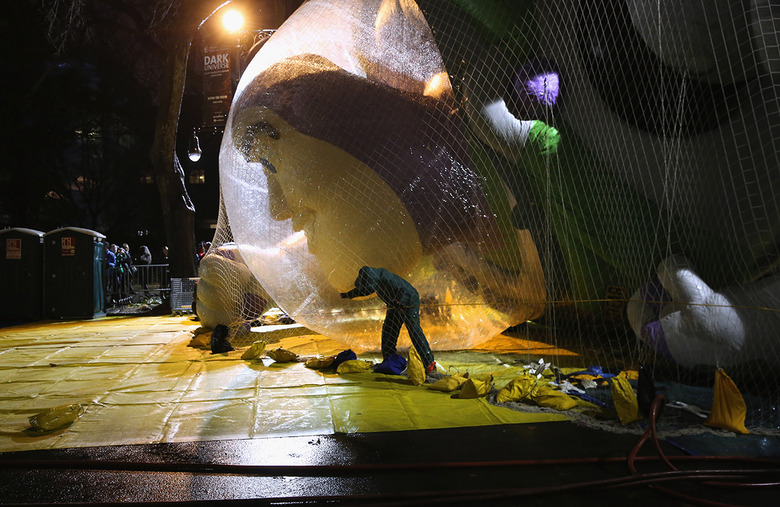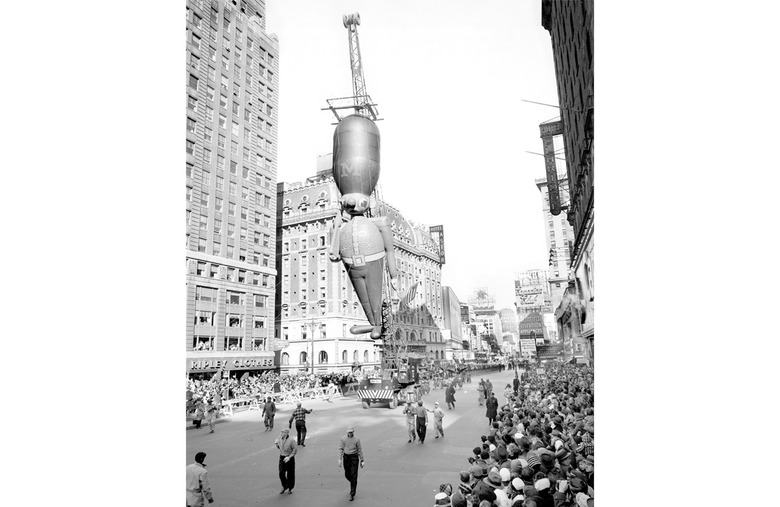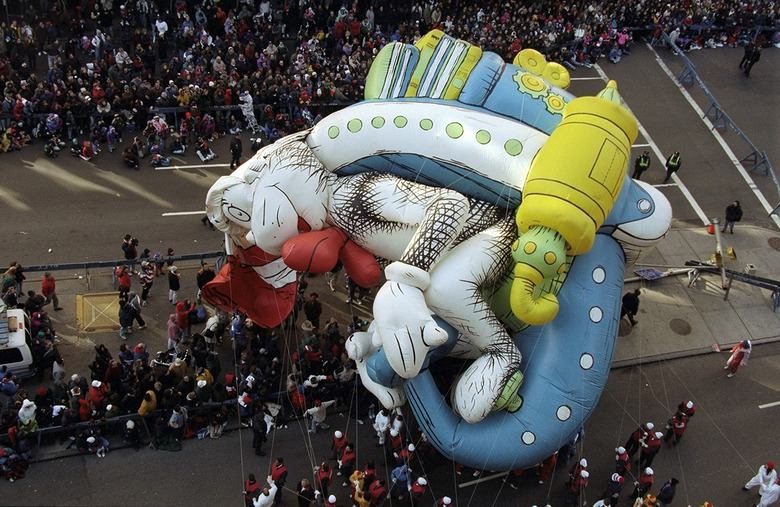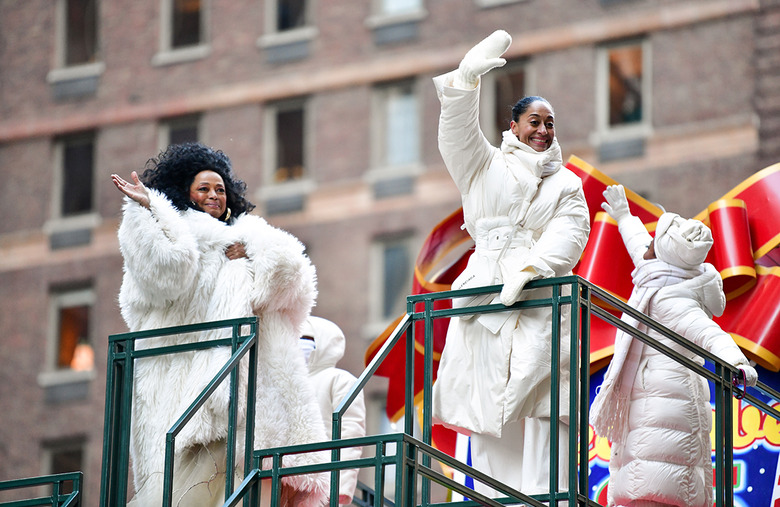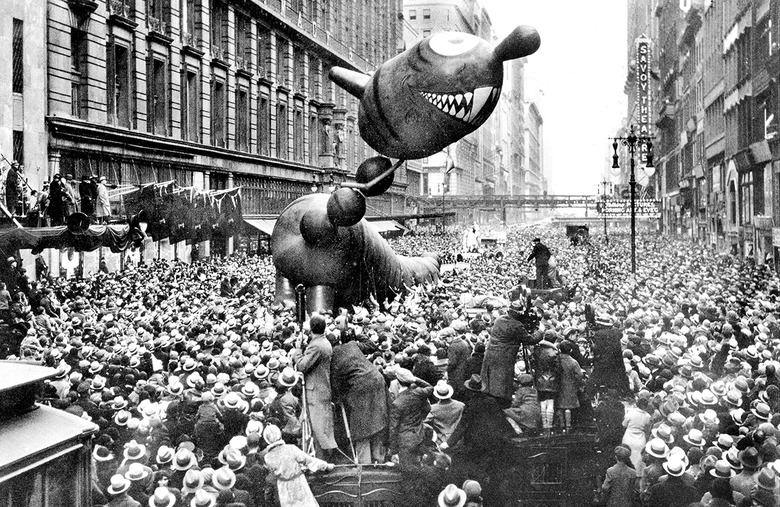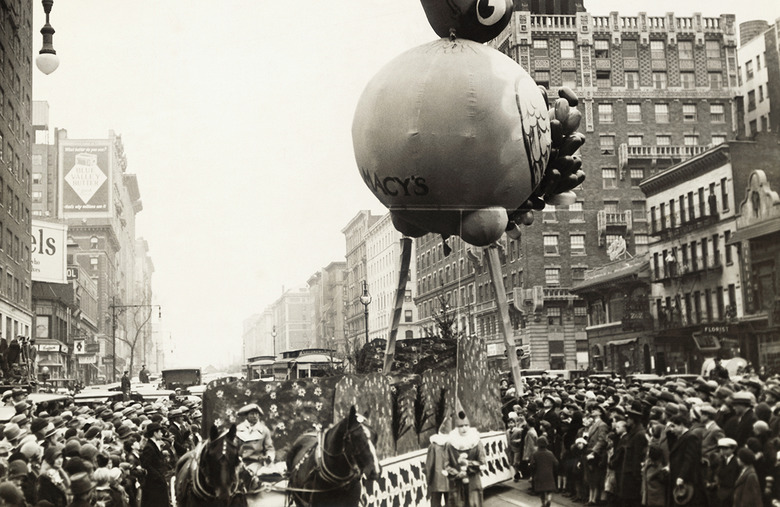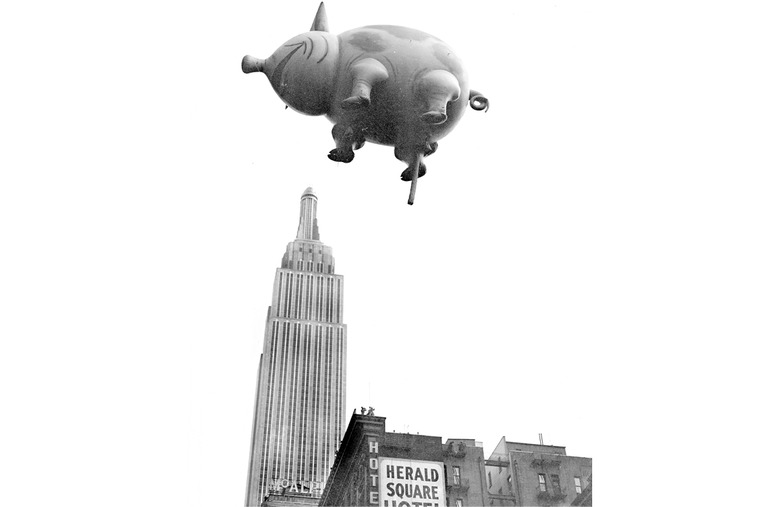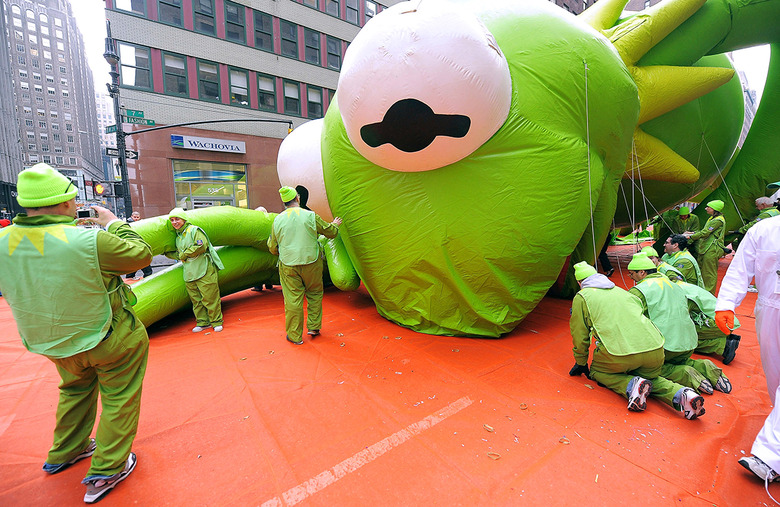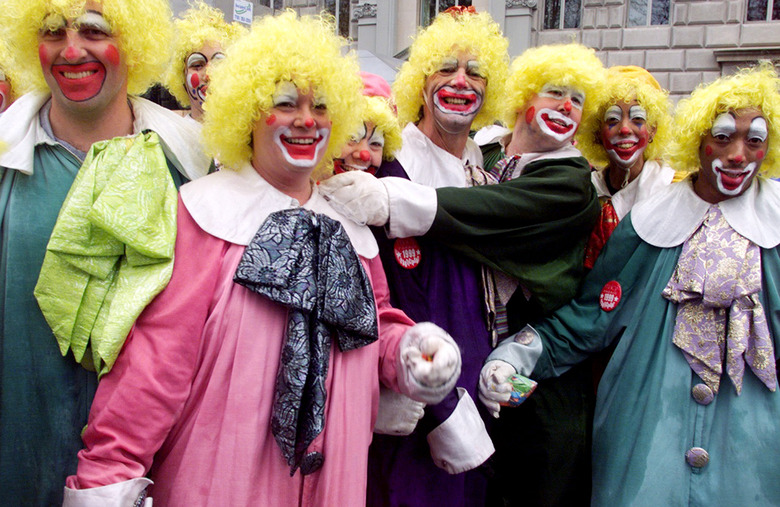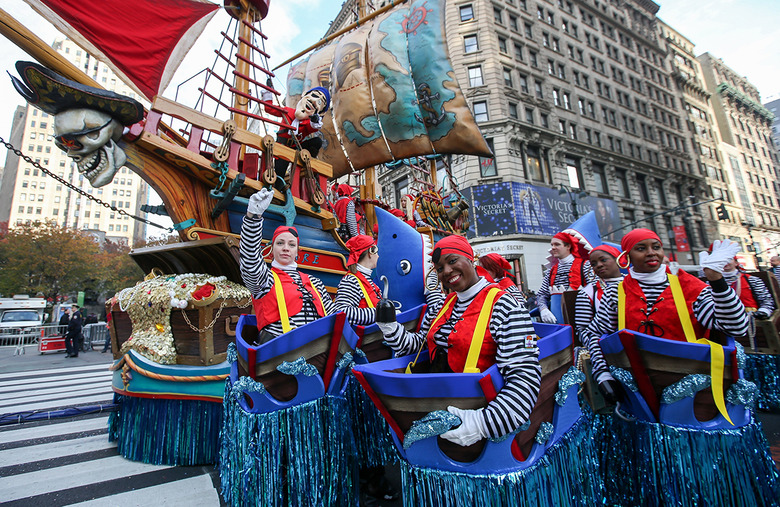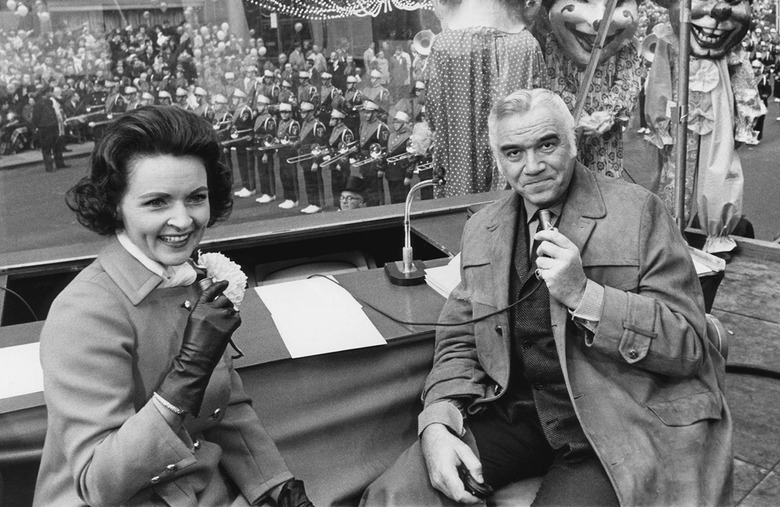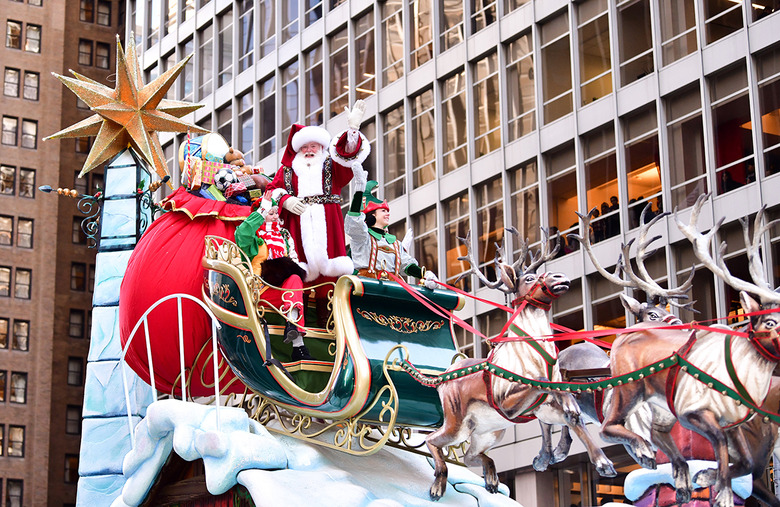Facts You Didn't Know About Macy's Thanksgiving Day Parade
The Macy's Thanksgiving Parade is a classic American tradition that many families gather around the television or travel to New York City to see every year on Thanksgiving Day. Macy's employees prepare all year to put on this spectacular show, which actually has a long and fascinating history. Here are some fantastical facts about this quintessential holiday season parade.
The first parade
The first Macy's Parade took place in 1924, but it was officially the Macy's Christmas Parade rather than a Thanksgiving parade. The parade, which was conceived to promote the expansion of Macy's massive New York flagship store, featured costume characters like clowns and cowboys, floats and tigers, bears and elephants from the Central Park Zoo.
Not the actual first
Although it's almost 100 years old, Macy's didn't host the first Thanksgiving parade. That distinction goes to Gimbels Thanksgiving Day Parade in Philadelphia, now known as the 6ABC Dunkin' Donuts Thanksgiving Day Parade, which debuted in 1920.
An exclusive 'club'
Since 1924, participants in the parade have been Macy's employees, their families, friends, or anyone who had a relationship with the parade's organizers. Aside from invited celebrities or guests, outside volunteers must apply to nab one of the 1,500 coveted volunteer spots.
Hard to handle
The average balloon requires 90 handlers to wrangle it down the parade route. The balloons on average contain 12,000 cubic feet of helium, so handlers must be in good health and weigh at least 120 pounds.
Balloon pilots
Each balloon has an official pilot who steers the volunteer handlers while walking the entire 2.5-mile parade route backward. Pilots, who are still volunteers themselves, attend field and classroom trainings to practice before the big day.
Helium crazy
Macy's is the second-largest consumer of helium in the world. The first? The United States government. The parade requires more than 300,000 cubic feet, or the volume of three and a half Olympic-size swimming pools, to inflate the balloons. Helium is a finite resource, and the cost to fill the balloons is more than $500,000.
The first balloon
Although the first Macy's parade was held in 1924, the parade's signature giant balloons didn't debut until three years later. In 1927, the parade launched its first balloon, a giant Felix the Cat. Mickey Mouse first appeared in balloon form in 1934, and "Peanuts" character Snoopy debuted in 1968.
Secret movie set
The Macy's Thanksgiving Day Parade played a large role in the plot of the 1947 holiday classic "Miracle on 34th Street." The parade scenes used in the movie were actually filmed live during the 1946 Macy's Thanksgiving Day parade. The film's crew carefully set up 14 cameras along the parade route, and unbeknownst to most spectators, Edmund Gwenn, the actor who played Santa Claus in the movie, actually rode on a float in the parade.
Snoopy is top dog
While certain balloon characters have come and gone over the years, the character that has made the most appearances is Charlie Brown's quirky beagle Snoopy. With his new 50th Anniversary of the Moon Landing design for the 2019 parade, he'll have a record 40 appearances and a record eight different designs since his debut in 1968. His previous iterations include Flying Ace Snoopy, Astronaut Snoopy and Millennium Snoopy.
Able to leap tall buildings in a single bound
While Snoopy is the most frequent star of the parade, he's not the biggest balloon on the block. The Superman balloon debuted in 1939 and reappeared in 1966. In his third appearance in 1980, the Man of Steel got a super-sized makeover, towering 80 feet tall, making him the tallest balloon to ever appear in the parade.
Pricey PR
Macy's balloon designers, who are known as "balloonatics," begin preparing up to a year before the parade. The price to design and build a brand-new character balloon is $190,000, with subsequent appearances costing $90,000 a year. The balloons are all constructed, prepped and tested by Halloween and then stored in a warehouse at the Macy's Parade Studio.
Modern art
All the giant balloons are works of art — they're specially designed and hand-painted by the team at Macy's Parade Studio in New Jersey. But in 2005, Macy's introduced a new series of "Blue Sky" balloons that would be like a floating art gallery. Artist Jeff Koons and director Tim Burton have contributed past designs. Contemporary artist Yayoi Kusama is designing a new balloon for 2019.
Folding floats
The Macy's Parade Studio in New Jersey makes all the balloons, and since 1968, the floats have also been designed by the company's artists. The floats can be up to 40 feet tall and 28 feet wide, but they fold down into a 12-foot-by-8-foot box to make the journey through the Lincoln Tunnel to the parade route in New York City.
Some assembly required
It takes 10 hours for the giant character balloons to be inflated, so the process begins the night before the parade. The balloons are inflated at a staging area at 77th Street and Central Park West, near the American Museum of Natural History. Locals and tourists alike gather to watch this show before the show.
Parade problems
With more than nine decades under its belt, the parade was bound to hit a few bumps over the years. For instance, in 1958, the balloons had to be hung off trucks with cranes along the parade route due to a helium shortage. The parade was canceled in 1942, 1943 and 1944 due to World War II. But not even the assassination of President John F. Kennedy six days before the parade could deter the 1963 festivities, which went on as scheduled in an attempt to lift national spirits.
Rain or shine?
Aside from the years the parade was canceled, the balloons have only been grounded by bad weather once. Heavy rain and strong winds made conditions too dangerous for them to fly in 1971. City policy is that the balloons can't fly if winds are stronger than 23 mph and wind gusts are higher than 34 mph. This rule was instituted after winds blew a rogue "Cat in the Hat" balloon into a lamp post in 1997, injuring four spectators.
But not too cold
Cold has never canceled the Macy's Thanksgiving Day Parade. In 2018, the temperature on Thanksgiving morning was 19 degrees F, making it the coldest Thanksgiving parade on record. Both spectators as well as performers such as Diana Ross, John Legend and Martina McBride were advised to cover their fingertips, earlobes and noses to prevent frostbite.
Wrecking balls
Extra balloon testing is done and precautions are put in place to make sure balloons don't get loose or cause damage. Balloons have accidentally hit electric wires, signs, tree branches and streetlights in the past, deflating parts of the balloon and even injuring onlookers. In 1931, the Felix the Cat balloon burst into flames after getting caught in some telephone lines. The last incident in which spectators got hurt took place in 2005, when the M&M's balloon hit a lamppost near Times Square, causing a light to fall and hit two women in the crowd.
Through the airwaves
The Macy's Parade was an instant success; more than 250,000 people attended the inaugural parade in 1924. Those unable to attend in person finally got their first taste of the tradition in 1932, when the first national radio broadcast took place.
Parade prizes
In the parade's early years, the organizers had no plans to deflate and store the balloons. Instead, they simply let them fly away. In 1928, Macy's decided to make a game out of finding the loose balloons. Five balloons, including a 60-foot tiger, were released with a return address and a reward of $100 for whoever found them first. Three landed on Long Island, one landed in the East River and another floated out to sea. Macy's abandoned the practice after one collided with an airplane wing in 1932, sending the plane into a tailspin.
Flat in a flash
After the parade is over, the balloons are deflated behind Macy's on Seventh Avenue. It takes just 15 minutes to deflate each balloon. Volunteers simply open up zippers on the sides of the balloons. They lie on the balloon to squeeze any extra helium out, then roll the character up from front to back.
Clowning around
More than 8,000 volunteers dressed as clowns will guide the 16 character balloons, while 1,200 cheerleaders and dancers, more than 1,000 clowns and 11 marching bands entertain the crowds.
Costumes
Hundreds of volunteers walking the parade and riding on floats are provided with fantastical costumes valued at $2 million. Macy's team designs about 700 new costumes every year. About 200 costume fitters are on-site the morning of the parade to help everyone get in costume, including the custom-made costumes for Santa and Mrs. Claus.
A star-studded affair
Countless celebrities have appeared in the Macy's Thanksgiving Day Parade, which was first broadcast on television by NBC in 1939. While many famous NBC newscasters have handled hosting the broadcast, including Willard Scott, Bryant Gumbel, Katie Couric and Al Roker, one of the program's longest-running hosting duos was "Bonanza" actor Lorne Greene and actress Betty White, who emceed from 1962-1970. More than 50 million people watch the TV broadcast around the country.
Santa Claus
Every year, the Macy's Thanksgiving Day Parade ends with a float featuring Santa Claus riding in his sleigh as a symbolic way to officially usher in the holiday season. The only year that Santa hasn't been the finale was in 1933, when he instead led the parade as the first float. If you already knew this fact, maybe that's a sign you're a little too obsessed with Christmas.
More from The Daily Meal:
All Aboard! The Best Christmas Train Rides in America
25 Secrets to Becoming the Best Holiday Party Guest Ever
The Most Common Turkey Mistakes and How to Avoid Them
